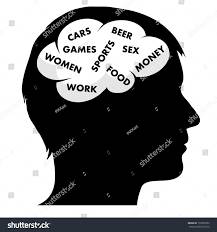
12 Jun What Really Do Men Want?
What do men want? Some people readily answer the question with an old-school optical illusion of a curvaceous naked lady representing the front view of a man’s head: her bust and stretched hands represent his forehead, her bent knees his nose and so on. It became a popular poster that seemed to reinforce popular psychoanalyst, Sigmund Freud’s view on the most powerful motivating factor of men.
Titled “what is on a man’s mind?’ the image also became a satire of Freud’s teaching. (You may Google it for a look). Freud propagated the view that the highest motivator in human beings is not power and/or money as widely believed. It is not primary needs such as food. His beliefs were that sex, although hidden, is the main motivating for force for men. Expectedly, the view has been widely debated over time, but some people are hesitant to totally dismiss it a crap.
Sigmund Freud
Freud, (1856—1939), the father of psychoanalysis, was a physiologist, medical doctor, psychologist and influential thinker of the early twentieth century. Working initially in close collaboration with Joseph Breuer, Freud elaborated the theory that the mind is a complex energy-system, the structural investigation of which is the proper province of psychology. He articulated and refined the concepts of the unconscious, infantile sexuality and repression.
He qualified as a Doctor of Medicine at the University of Vienna in 1881, and then carried out research into cerebral palsy, aphasia and microscopic neuroanatomy at the Vienna General Hospital. He was appointed a University lecturer in neuropathology in 1885 and became a Professor in 1902.
According to Wikipedia, in creating psychoanalysis, a clinical method for treating psychopathology through dialogue between a patient and a psychoanalyst, Freud developed therapeutic techniques such as the use of free association (in which patients report their thoughts without reservation and in whichever order they spontaneously occur) and discovered transference (the process in which patients displace on to their analysts feelings derived from the sexual experiences and fantasies of their childhood), establishing its central role in the analytic process.
Adam and Eve
In the Bible, God found the need of a woman for man and created Eve for Adam, the first man. In an obvious fear of blasphemy, let be present the biblical account verbatim here.
The Lord God took the man and put him in the Garden of Eden to work it and take care of it. And the Lord God commanded the man, “You are free to eat from any tree in the garden; but you must not eat from the tree of the knowledge of good and evil, for when you eat from it you will certainly die.”
The Lord God said, “It is not good for the man to be alone. I will make a helper suitable for him.”
Now the Lord God had formed out of the ground all the wild animals and all the birds in the sky. He brought them to the man to see what he would name them; and whatever the man called each living creature, that was its name.
So the man gave names to all the livestock, the birds in the sky and all the wild animals.
But for Adam no suitable helper was found. So the Lord God caused the man to fall into a deep sleep; and while he was sleeping, he took one of the man’s ribs and then closed up the place with flesh. Then the Lord God made a woman from the rib he had taken out of the man, and he brought her to the man.
The man said, “This is now bone of my bones and flesh of my flesh; she shall be called ‘woman,’ for she was taken out of man.”


Sorry, the comment form is closed at this time.